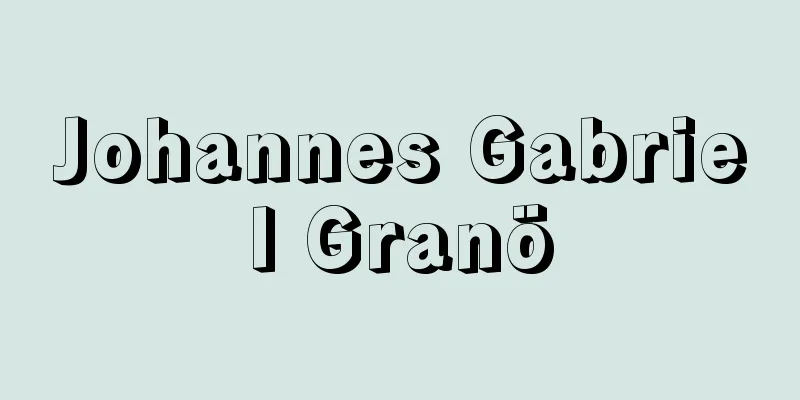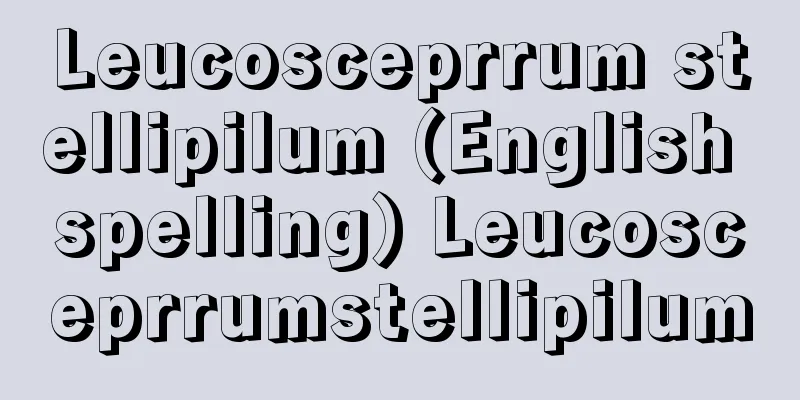Experimental cinema

|
A general term for experimental and innovative films that go beyond the methods and forms of existing films. Almost synonymous with avant-garde film. Most of them are produced by individuals outside the film industry system, like paintings and poetry, and are closely connected to modern and contemporary art and art movements such as avant-garde, modernism, and postmodernism. They have an important significance in the discovery, exploration, and innovation of new expressions and forms of film, and depending on the era and region, they have been called avant-garde film (avant-garde film), underground film, different film (andere Kino in German, cinéma différent in French), and personal film, but collectively they are called "experimental film." Since the 1990s, they have also been called "experimental video," including video and computer graphics. The history of experimental film can be seen not simply as a departure from commercial feature films and storytelling, but as an attempt to redefine and rediscover the film medium and its potential through new forms and expressions. [Nishijima Norio] Pre-World War IIExperimental films before the Second World War were the encounter between various avant-garde artists and art movements and the new medium of film, and are known as "avant-garde films." The first attempts were experiments in photography (photodynamism, 1911- ) and film by Italian Futurist Anton Giulio Bragaglia (1890-1960) and others, but some say that the first was the Russian film Drama of the Futurist Cabaret No. 13 (1913-1914, Burliuk, Larionov, Natalia Goncharova (1881-1962)). The latter developed into the Russian avant-garde of the 1920s, resulting in Eisenstein's feature films and Dziga Vertov's avant-garde documentaries (such as Man with a Camera, 1929). Also in France, the Russian-born painter Leopold Survage (1879-1968) began experimenting with abstract animation in his work Rhythm in Color (1912-1914). These attempts became movements in Berlin and Paris in the 1920s. In Germany, Walter Ruttmann (1887-1941), who would later become known for Berlin -- Symphony of a Great City (1927), produced an abstract animation with color and music called Opus I (1921), and Dadaist painter Hans Richter and Swedish painter Viking Eggeling (1880-1925) produced "absolute film" using rhythmic movements of geometric shapes. He formed a school of moving abstract painting, linking himself with the abstract animation of Oskar Fischinger (1900-1967), the cinematographer Guido Seeber (1879-1940), the Bauhaus movement of Laszlo Moholy-Nagy and Werner Graeff (1901-1978), and the new art movement De Stijl of the Netherlands' Theo van Doesburg. This was also the heyday of Expressionist film in Germany, which began with Dr. Caligari (1919). In France, the lineage of poetic cinema began with critic Ricciotto Canudo's (1877-1923) Manifesto of the Seventh Art (1911), and included the avant-garde dramatic films of Abel Gance and Marcel L'Herbier (1888-1979), which gave birth to Gance's masterpieces The White Rose of the Railroad (1923) and Napoleon (1927).The "photogénie" dramatic film school also gave rise to the theories and works of Jean Epstein, Germaine Dulac (1882-1942), and Louis Delluc (1890-1924). The early attempts at full-scale avant-garde film in France were American photographer Man Ray's Return to Reason (1923), Cubist painter Fernand Léger and American filmmaker Dudley Murphy's (1897-1968) Ballet Mécanique (1924), and René Clair's Interlude (1924) for the avant-garde Swedish Ballet, which deconstructed real landscapes with experiments in filming techniques and collage-like editing. It was also linked to the rise of Surrealism, and Marcel Duchamp and Georges Hugnet (1906-1974) produced films, and the theater artist Antonin Artaud was involved in film through scriptwriting, acting, and commentary. It also produced the "pure film" of Claire's brother Henri Chomette (1896-1941) and the early Jean Renoir, and then declined with the Spanish Luis Bunuel and Salvador Dali's Un Chien Andalou (1928), Jean Bigot's Les Poles de Nice (1929), and Jean Cocteau's Les Poets Blood (1930). In France, however, it was continued through the experimental animation of Russian Alexandre Alexeieff (1901-1982) and the works of theorist Jean Mitry (1904-1988), and saw new developments from the 1950s onwards. It should be noted that Poland and Sweden also had their own experimental films in the 1930s. [Nishijima Norio] After World War IIAt the same time as the French avant-garde films, experimental films were also made in New York, such as photographers Paul Strand and Charles Sheeler's Manhattan (1921), Ralph Steiner's (1899-1986) H2O (1929), James S. Watson's (1894-1982) and Melville Webber's (1871-1947) Fall of the House of Usher (1928) and Lot of Sodom (1933), but they did not have the same impact as those in Europe. However, with the departure of artists from the US and the revitalization of artistic activity in general in the 1940s, the main stage of contemporary art moved to New York, and experimental films developed rapidly in America after World War II. Maya Deren (1917-1961), a pioneering female filmmaker, depicted a woman's psychological conflict without dialogue in her film Nets in the Afternoon (1943) as a dream within a dream, and Kenneth Anger used a similar technique to depict a scandalous depiction of homosexual desire in Fireworks (1947). Stan Brakhage (1933-2003) moved from these psychodramas to more symbolic, abstract, and pure expression, progressing to films such as The Night Before (1958) and the epic Dog Star Man (1961-1964). Since A Movie (1958), Bruce Conner (1933-2008) has used montages of existing film fragments to develop the technique of found footage (see below). Animation has included the eccentric Harry Smith (1923-1991) and Robert Breer (1926-2011), documentary-style works by Shirley Clarke (1919-1997) and Bruce Baillie (1931-2020), and pioneers of computer graphics such as the Whitney Brothers, John Whitney (1917-1995), James Whitney (1921-1982), and Ed Emshwiller (1925-1990). Lithuanian immigrant Jonas Mekas supported these efforts by shooting his own diary films, founding the magazine Film Culture (1955), forming a filmmakers' union (1962) to screen and distribute films, and working tirelessly against censorship. American experimental films of this era were also linked to Beat literature, Abstract Expressionist painting, counterculture, homosexuality and sexual liberation, and a movement known as "underground cinema" spread around the world. From this movement, new forms emerged in the mid-1960s. These were a group of films known as "structural films," which had connections to minimal art and conceptual art, such as the silent films made by pop artist Andy Warhol using a fixed camera and a single reel of film (such as Empire, 1964, which took eight hours to run), Tony Conrad's (1940-2016) flickering film Flicker (1965), which developed from this, Paul Sharits' (1943-1993) work, George Landow's (1944-2011) film that showed the film itself, and Michael Snow's (1928- ) Wavelengths (1967), which is a 45-minute zoom in on a room. Furthermore, the attempts at "expanded cinema" that emerged in the late 1960s (using multiple screens and mixing with other media) have attracted attention again since the 1980s as an exchange with performance art, media art, and contemporary art. After World War II, European experimental film began with the structural works of the Austrians Peter Kubelka (1934- ) and Kurt Kren (1929-1998) starting in the 1950s, and went on to produce structural works by W+B Hein (the duo Wilhelm Hein born in 1940 and Birgit Hein born in 1942) and Werner Nekes (1944-2017) in Germany in the 1960s, and Malcolm Le Grice (1940- ) and Peter Gidal (1946- ) in the UK in the 1970s, all of which influenced subsequent artists. Also, under the influence of underground cinema, a succession of individualistic directors produced distinctive feature films, including W. Wenders and W. Herzog from Germany, D. Lynch and Gus Van Sant (1952- ) from the United States, Greenaway, Jarman, and Sally Potter (1949- ) from the UK, Philippe Garrel (1948- ) and Marcel Hanoun (1929-2012) from France, and Chantal Akerman (1950-2015) from Belgium. Later, in the United States, James Benning (1942-) and others produced their own unique developments in landscape and diary films, but from the mid-1970s, talk of the "end of the avant-garde" began to spread in contemporary art in general, and experimental films also entered an era of blending and quoting various forms and styles. Meanwhile, in connection with feminist art and the gay movement, which began to have a major influence from the 1970s, there was a noticeable tendency from the 1980s onwards to thematize issues of gender (socio-cultural sexual differences) and sexuality by linking them to gaze and the body. The activities of many female artists, including Sharon Couzin (1943-) and animation artist Suzan Pitt (1943-2019), were also notable. Since the late 1980s, many European works have been produced using "found footage," which has focused on the history and memory of the 20th century, as well as the history and politics of film and video. Representative artists include Peter Forgacs (1950-) from Hungary, Yervant Gianikian (1942-) and Angela Ricci Lucchi (1942-2018) from Italy, Matthias Müller (1961-) from Germany, Martin Arnold (1959-) and Peter Tscherkassky (1958-) from Austria, and Cécile Fontaine (1957-) from France. This proliferation and diversification of visual expression has transcended isms and genres, blurring the boundaries between feature film and experimental film, documentary and independent film, art and film, etc. It has also expanded beyond the boundaries of film to include video and computer-based installations and interactive works in which the audience can participate, while the synthetic images of the digital age have created a new realm of expression that is different from the authenticity of classical photography. Furthermore, since the second half of the 1990s, there has been a rapid increase in the number of contemporary art exhibitions using projectors, giving rise to a new exchange between art and video, which has led to the emergence of visual artists who have gone on to direct feature films, such as Pipilotti Rist (1962-), Steve McQueen (1969-), and Sam Taylor-Wood (1967-). [Nishijima Norio] JapanAfter the strong influence of Expressionism was seen in Kenji Mizoguchi's Blood and Spirits (1923) and Kiyohiko Ushihara's (1897-1985) Collection of Good Feeling Films (1924), full-fledged avant-garde feature films were made by Teinosuke Kinugasa's A Crazy Page (1926) and Crossroads (1928). The import and release of French avant-garde films from 1930 influenced small-filmmakers, leading to the creation of Ten Minutes of Thought (1932) by Masakazu Nakai (1900-1952), an aesthetician interested in constructivism. After the Second World War, the young artists' group formed around Takiguchi Shuzo known as the "Experimental Workshop" produced films such as Mobiles and Vitrine (1954) and Kine-Calligraphy (1955, Graphic Group), while in connection with this group, Matsumoto Toshio (1932-2017), Takemitsu Toru, and Yamaguchi Katsuhiro produced the avant-garde PR film Silver Wheel (1955-1956), which ignited the experimental film movement. After the experimental works of avant-garde artists, the Film Research Society of the Film Department of the College of Art of Nihon University (Nihon University Eiken) with works such as Dialogue Between Nails and Socks (1958) and The Shadow of Chains (1962), and the attempts of pioneers such as Takabayashi Yoichi (1931-2012), Obayashi Nobuhiko (1938-2020), and Iimura Takahiko (1937- ), American experimental films were shockingly introduced in 1966, and combined with the anti-establishment trend of the 1960s, they became a boom. Both Takabayashi and Obayashi went in the direction of fiction films, while Iimura went to America and became the most cutting-edge creator of "structural films." Donald Richie (1924-2013), an American living in Japan, also made lyrical experimental films from the 1950s. The Japan Filmmakers Cooperative was formed in 1968 as an organization for filmmakers, but after conflicts and divisions, the Underground Center (now Image Forum) became the center of distribution and screening activities, and the group was active in various places such as Sapporo, Kansai, and Fukuoka. Japanese experimental cinema, which steadily established itself as "individual films" in the 1970s, is highly regarded internationally for its wide range of styles, from special effects to diary films, and sophisticated techniques. The main directors include playwright Terayama Shuji, Matsumoto Toshio, who started out making avant-garde documentaries in the 1950s, Kanai Katsu (1936-), a Daiei cameraman turned avant-garde feature filmmaker, Kawanaka Nobuhiro (1941-), who was also an organizer of the experimental film movement, Tanaami Keiichi (1936-), poet Suzuki Shiroyasu, and animation directors Aihara Nobuhiro (1944-2011) and Furukawa Taku (1941-), as well as Okuyama Junichi (1947-), Kota Isao (1953-), Yamazaki Hiroshi, Hagiwara Sakumi (1946-), and Idemitsu Mako (1940- ), Takashi Nakajima (1951-), and others. In the world of experimental film, both in Japan and abroad, 16mm film was the mainstream, but in the late 1970s and 1980s in Japan, 8mm film production became popular among young filmmakers, such as students, and even after the manufacture of 8mm equipment was discontinued in the mid-1980s, filmmakers who valued the portability and intimacy of 8mm continued to use 8mm. Also, with the rapid spread of home video and 8mm video in the 1980s, there were many cases of film and video filmmakers working in the same field. In the 1970s, interest in the media itself and form gave rise to a style that emphasized the visual. Artists of this era continued to delve deeply into the characteristics of images and media, refining their own unique themes and styles, and influencing the next generation. New directors of the 1980s included Ito Takashi (1956-), of Spacy (1981), Yamada Isao (1952-), of romantic dreams, Morishita Akihiko (1952-), of metafilms (films about films), as well as Ota Yo (1953-), Yamazaki Mikio (1959-), Kato Itaru (1958-), and in the field of animation, IKIF (Ishida Kifune Image Factory, formed by Kifune Tokumitsu and Ishida Sonoko), Kurosaka Keita (1956-), and Yamamura Koji (1964-). From the 1980s to the 1990s, coupled with the rise of female writers, there was an increase in works that explored personal and family identity and trauma, and the extensive use of fiction and language was also noticeable. During this period, Hiroyuki Oki (1964-), Junko Wada (1973-), Mari Terashima (1965-), Ichiro Sueoka (1965-), and Yuri Obitani (1964-) presented new and unique styles of writing. In the 2000s, the spread of computers capable of video editing led to the generalization and popularization of production using digital equipment, and the proliferation and diversification of expression became evident. Relying on personal documentaries, 3DCG, 3D video, and other technical and expressive techniques became increasingly diverse, forcing a redefinition of "visual expression as art." In the field of animation, which was redefined as the border area between fine art and video, Ishida Takashi (1972-), Tsuji Naoyuki (1972-), Wada Atsushi (1980-), and Oyama Kei (1978-) produced works that were noteworthy in both technique and idea. [Nishijima Norio] "American Experimental Film: A Collection of Film Essays on Film Culture" edited by Adams Sitney and translated by Ishizaki Koichiro (1972, Film Art Publishing)" ▽ "Mekas' Film Diaries: The Origins of New American Cinema 1959-1971" by Jonas Mekas, translated by Iimura Akiko (1974, Film Art Publishing)" ▽ "Film: Experiments in the Everyday" by Kawanaka Nobuhiro (1975, Film Art Publishing)" ▽ "Aesthetics of Vision" by Matsumoto Toshio (1976, Film Art Publishing)" ▽ "For Visual Experiments: Text, Concept, Performance" by Iimura Takahiko (1986, Seidosha)" ▽ "Images in the Making: Producers of Experimental Film" by Nishijima Norio (1991, Bunsaisha)" ▽ "Searching for Images: Institutions, Border Crossings, and the Creation of Symbols" by Matsumoto Toshio (1991, San-ichi Shobo)" ▽ "A 40-Year History of Experimental Film in Japan," edited by Image Forum (1994, Kirin Plaza Osaka)" ▽ "The Discovery of Film: Avant-Garde and Documentary, by Matsumoto Toshio (2005, Seiryu Publishing)" ▽ "The World of Media Art: Experimental Film 1960-2007," edited by Ina Shinsuke (2008, Kokusho Kankokai)" ▽ "A History of Experimental Film: Film and Video -- From the Normative Avant-Garde to Contemporary Film Practice in Britain, by A.L. Rees, translated by Inubuse Masakazu et al. (2010, Koyo Shobo)" ▽ "Art x Film: Creative Chaos in the Borderlands," edited by Matsumoto Toshio (2010, Bijutsu Shuppansha)" [References] | | | | | | | | | | | | | | | | | | | | | | | | | | | | | |Source: Shogakukan Encyclopedia Nipponica About Encyclopedia Nipponica Information | Legend |
|
既存の映画の手法や形式を超えて生み出される実験的・革新的な映画の総称。アバンギャルド映画とほぼ同義。おもに映画産業のシステムの外側で、絵画や詩と同様に個人で製作されるものが多く、アバンギャルド、モダニズム、ポストモダニズムなど近現代の美術や芸術運動とつながりが深い。映画の新しい表現や形式の発見、探求、革新において重要な意義をもち、時代や地域により、前衛映画(アバンギャルド映画avant-garde film)、アンダーグラウンド映画、別の映画(ドイツ語でアンデーレ・キノandere Kino、フランス語でシネマ・ディフェランcinéma différent)、個人映画などともよばれたが、これらを総称して「実験映画」という。また1990年代以降、ビデオやコンピュータ・グラフィクスも含め「実験映像」ともよばれる。 実験映画の歴史は、単に商業的劇映画やストーリー性からの逸脱だけでなく、映画というメディアやその潜在能力を新たな形式や表現を通して再定義、再発見しようとしてきたといえる。 [西嶋憲生] 第二次世界大戦前第二次世界大戦前の実験映画は、さまざまな前衛芸術家、芸術運動と、映画という新しいメディアの出会いであり、「前衛映画」の名でよばれる。最初の試みはイタリア未来派のアントン・G・ブラガリアAnton Giulio Bragaglia(1890―1960)らによる写真(フォトディナミスモ、1911~)や映画の実験だが、ロシアの『未来派キャバレーNo.13のドラマ』(1913~1914、ブルリューク、ラリオノフ、ゴンチャロワNatalia Goncharova(1881―1962))を最初とする説もある。後者は1920年代ロシア・アバンギャルドへ発展して、エイゼンシュテインの劇映画やジガ・ベルトフの前衛ドキュメンタリー(『カメラを持った男』1929年など)に結実する。またフランスでは、ロシア出身の画家レオポルド・シュルバージュLeopold Survage(1879―1968)が『色彩のついたリズム』(1912~1914)で抽象アニメーションの試作に着手していた。 これらの試みは1920年代のベルリンとパリで運動となる。ドイツでは、のちに『伯林(ベルリン)――大都会交響楽』(1927)で知られるワルター・ルットマンWalter Ruttmann(1887―1941)の色彩・音楽付の抽象アニメーション『作品Ⅰ』(1921)やダダイスムの画家ハンス・リヒターとスウェーデン出身のビキング・エッゲリングViking Eggeling(1880―1925)が幾何学的形体のリズミックな動きによる「絶対映画」absolute Filmを製作。抽象アニメーションのオスカー・フィッシンガーOskar Fischinger(1900―1967)、撮影技師グィド・ゼーバーGuido Seeber(1879―1940)の試作や、バウハウスのラズロ・モホリ・ナギやウェルナー・グレーフWerner Graeff(1901―1978)、オランダのテオ・ファン・ドースブルフらの新芸術運動デ・ステイルと結び付き、動く抽象絵画の一派をなした。この時代のドイツは『カリガリ博士』(1919)に始まる表現主義映画の全盛期でもあった。 フランスでは批評家リッチョット・カニュードRicciotto Canudo(1877―1923)の『第七芸術宣言』(1911)に始まる詩的映画の系譜としてアベル・ガンスやマルセル・レルビエMarcel L'Herbier(1888―1979)の前衛劇映画があり、ここからガンスの傑作『鉄路の白薔薇(ばら)』(1923)、『ナポレオン』(1927)が生まれ、また「フォトジェニー」photogénie派劇映画としてジャン・エプステイン、ジェルメーヌ・デュラックGermaine Dulac(1882―1942)、ルイ・デリュックLouis Delluc(1890―1924)らの理論と実作があった。 フランスでの本格的な前衛映画cinéma d'avant-gardeは、アメリカ出身の写真家マン・レイの『理性に帰る』(1923)やキュビスムの画家フェルナン・レジェとアメリカの映画作家ダッドリー・マーフィーDudley Murphy(1897―1968)による『バレエ・メカニック』(1924)、前衛舞踊のスウェーデン・バレエ団のためにルネ・クレールのつくった『幕間』(1924)が初期の試みで、撮影技法の実験とコラージュ的編集で現実風景を解体した。シュルレアリスムの台頭とも結び付き、マルセル・デュシャン、ジョルジュ・ユニェGeorges Hugnet(1906―1974)らも製作、演劇人アントナン・アルトーは脚本、出演、論考によって映画とかかわった。クレールの兄アンリ・ショメットHenri Chomette(1896―1941)の「純粋映画」cinéma purや初期のジャン・ルノワールも手がけ、スペイン出身のルイス・ブニュエルとサルバドル・ダリの『アンダルシアの犬』(1928)、ジャン・ビゴの『ニースについて』(1929)、ジャン・コクトーの『詩人の血』(1930)を頂点に退潮するが、フランスではロシア出身のアレクサンドル・アレクセイエフAlexandre Alexeieff(1901―1982)の実験アニメーションや理論家ジャン・ミトリJean Mitry(1904―1988)の作品を通じて受け継がれ、1950年代以降新たな展開を迎える。なお、1930年代にポーランドやスウェーデンにも独自の実験映画が形成されていた。 [西嶋憲生] 第二次世界大戦後フランス前衛映画と同時期、ニューヨークでも写真家のポール・ストランドとチャールズ・シーラーの『マンハッタ』(1921)やラルフ・スタイナーRalph Steiner(1899―1986)の『H2O』(1929)、ジェイムズ・S・ワトソンJames Sibley Watson(1894―1982)とメルビル・ウェバーMelville Webber(1871―1947)の『アッシャー家の崩壊』(1928)、『ソドムのロト』(1933)など、実験映画はつくられたが、ヨーロッパほどの衝撃力をもたなかった。しかし、1940年代に芸術家の亡命と芸術活動全般の活性化で現代芸術の主舞台がニューヨークに移ったのに伴い、実験映画は第二次世界大戦後アメリカで急展開する。 女性映像作家の先駆者マヤ・デレンMaya Deren(1917―1961)は『午後の網目』(1943)で女性の心的葛藤(かっとう)を夢のなかの夢として台詞(せりふ)なしで描き、ケネス・アンガーも同様の手法で『花火』(1947)でホモセクシュアルの欲望をスキャンダラスに描いた。スタン・ブラッケイジStan Brakhage(1933―2003)はこうした心理劇(サイコドラマ)からより象徴的で抽象的な純粋表現を目ざし、『夜への前ぶれ』(1958)や大作『DOG STAR MAN』(1961~1964)へ進む。ブルース・コナーBruce Conner(1933―2008)は『A MOVIE』(1958)以降、既存フィルムの断片のモンタージュで、のちの「ファウンド・フッテージfound footage」(後述参照)の手法を開発。アニメーションには奇人ハリー・スミスHarry Smith(1923―1991)やロバート・ブリアRobert Breer(1926―2011)、ドキュメンタリー的作風ではシャーリー・クラークShirley Clarke(1919―1997)やブルース・ベイリーBruce Baillie(1931―2020)、コンピュータ・グラフィクスの先駆ホイットニー兄弟John Whitney(1917―1995)、James Whitney(1921―1982)やエド・エムシュウィラーEd Emshwiller(1925―1990)、と百花繚乱(りょうらん)の活況であった。それらをリトアニアからの移民ジョナス・メカスが、自らも日記映画を撮りつつ、雑誌『フィルム・カルチャー』の創刊(1955)、作家組合の結成(1962)による上映と配給、そして反検閲の闘いと八面六臂(はちめんろっぴ)の活躍によって支えた。この時代のアメリカ実験映画は、ビート文学、抽象表現主義の絵画、対抗文化、同性愛や性の解放ともつながり、「アンダーグラウンド映画」underground cinemaとよばれるムーブメントが世界各地に広がった。 この運動のなかから1960年代なかば、新しい形式が現れる。ポップ・アーティスト、アンディ・ウォーホルがカメラを固定しフィルム1巻を回し続け無編集でつくったサイレント映画(上映に8時間かかる『エンパイア』1964年など)、トニー・コンラッドTony Conrad(1940―2016)の明滅映画『フリッカー』(1965)、その発展としてのポール・シャリッツPaul Sharits (1943―1993)、フィルムそれ自体を見せるジョージ・ランドウGeorge Landow (1944―2011)、室内を45分間ズームアップするマイケル・スノウMichael Snow(1928― )の『波長』(1967)など、ミニマル・アートやコンセプチュアル・アートにもつながる「構造映画」structural filmとよばれた一群の映画である。また1960年代後半に現れた「拡張映画」expanded cinemaの試み(多面スクリーンや他メディアとの混合)は、1980年代以降、パフォーマンスやメディアアート、現代美術との交流としてふたたび注目された。 ヨーロッパにおける第二次世界大戦後の実験映画は、オーストリア人のペーター・クーベルカPeter Kubelka(1934― )やクルト・クレンKurt Kren(1929―1998)が1950年代から手がけた構造的作品を嚆矢(こうし)に、1960年代ドイツではW+B・ハイン(1940年生まれのウィルヘルム・ハインWilhelm Heinと1942年生まれのビルギット・ハインBirgit Heinのコンビ)やウェルナー・ネケスWerner Nekes(1944―2017)、1970年代イギリスではマルコム・ルグライスMalcolm Le Grice(1940― )やピーター・ジダルPeter Gidal(1946― )らの構造的作品を生み、以降の作家に影響を与えた。 またアンダーグラウンド映画の影響下から異色の劇映画をつくる個性派監督も続出した。ドイツのW・ベンダースやW・ヘルツォーク、アメリカのD・リンチやガス・バン・サントGus Van Sant(1952― )、イギリスのグリーナウェイ、ジャーマン、ポッターSally Potter(1949― )、フランスのガレルPhilippe Garrel(1948― )、アヌーンMarcel Hanoun(1929―2012)、ベルギーのアケルマンChantal Akerman(1950―2015)らである。 その後アメリカではジェイムズ・ベニングJames Benning(1942― )らの風景映画や日記映画に独自の展開も生むが、1970年代なかばから現代芸術全般で「アバンギャルドの終焉(しゅうえん)」が語られ始め、実験映画もさまざまな形式・様式の折衷と引用の時代に入っていく。一方、1970年代から大きな影響力をもちはじめたフェミニズム・アートやゲイ・ムーブメントと関連し、1980年代以降ジェンダー(社会文化的性差)やセクシュアリティの問題を視線や身体にからめて主題化する傾向も顕著になる。シャーレン・カズンSharon Couzin(1943― )、アニメーションのスーザン・ピットSuzan Pitt(1943―2019)はじめ多くの女性作家たちの活躍も目だった。 ヨーロッパでは1980年代後半から「ファウンド・フッテージ」found footage とよばれる古いフィルムを再利用する作品が多くみられ、そこでは20世紀の歴史や記憶、映画・映像をめぐる歴史や政治性が主題化された。代表的作家には、ハンガリーのフォルガーチPeter Forgacs(1950― )、イタリアのジャニキアンYervant Gianikian(1942― )&リッチ・ルッキAngela Ricci Lucchi(1942―2018)、ドイツのミュラーMatthias Müller(1961― )、オーストリアのアルノルトMartin Arnold(1959― )、チェルカスキーPeter Tscherkassky(1958― )、フランスのフォンテーヌCécile Fontaine(1957― )らである。 こうして拡散し多様化していく映像表現の動きは、イズム(主義)やジャンルを超え、劇映画と実験映画、ドキュメンタリーと個人映画、美術と映画などの境界もあいまいにした。さらに映画という枠を超えてビデオやコンピュータを使ったインスタレーションや観客が参加するインタラクティブ(双方向)作品にまで広がる一方、デジタル時代の合成映像が古典的な写真的信憑性とは異質な表現領域を形成した。 また、1990年代後半以降、現代美術においてプロジェクター投影による映像作品の展示が急増して、新たな美術と映像の交流が起こり、そこからピピロッティ・リストPipilotti Rist(1962― )、スティーブ・マックイーンSteve McQueen(1969― )、サム・テイラー・ウッドSam Taylor-Wood(1967― )など劇映画を監督する美術家も出ている。 [西嶋憲生] 日本溝口健二(みぞぐちけんじ)の『血と霊』(1923)や牛原虚彦(うしはらきよひこ)(1897―1985)らの『感じの好(よ)い映画集』(1924)に表現主義の強い影響がみられたのち、衣笠貞之助(きぬがさていのすけ)の『狂った一頁(ページ)』(1926)と『十字路』(1928)が本格的な前衛劇映画である。1930年からのフランス前衛映画の輸入公開は小型映画作家に影響を与え、構成主義に興味をもつ美学者中井正一(まさかず)(1900―1952)の『十分間の思索』(1932)などもつくられた。 第二次世界大戦後は、滝口修造(たきぐちしゅうぞう)の周辺に形成された若手芸術家グループ「実験工房」から『モビールとヴィトリーヌ』(1954)や『キネ・カリグラフィ』(1955、グラフィック集団)が、またそれと関連して松本俊夫(としお)(1932―2017)、武満徹(たけみつとおる)、山口勝弘(かつひろ)らが前衛的PR映画『銀輪』(1955~1956)を製作し実験映画運動に火をつけた。前衛芸術家たちの試作、日本大学芸術学部映画学科映画研究会(日大映研)の『釘と靴下の対話』(1958)や『鎖陰(さいん)』(1962)、高林陽一(1931―2012)、大林宣彦(のぶひこ)(1938―2020)、飯村隆彦(いいむらたかひこ)(1937― )ら先駆者の試みののち、1966年アメリカ実験映画が衝撃的に紹介され、1960年代の反体制的な時代風潮と相まってブームをなした。高林、大林はともに劇映画の方向へ進み、飯村はアメリカに渡り「構造映画」のもっとも先端的な作り手となった。また、日本在住のアメリカ人、ドナルド・リチーDonald Richie(1924―2013)も1950年代から叙情的な実験映画を製作した。作家組織は、1968年に「ジャパン・フィルムメーカーズ・コーポラティブ」が結成されるが、対立や分裂を経て「アンダーグラウンド・センター(現、イメージフォーラム)」が配給・上映活動の中心となり、札幌、関西、福岡など各地でも活発な活動がみられた。 1970年代に「個人映画」として地道に定着した日本の実験映画は、特殊効果から日記映画まで幅広いスタイルと洗練された技巧で国際的に評価が高い。おもな作家には、劇作家寺山修司、1950年代に前衛記録映画から出発した松本俊夫、大映カメラマンから前衛劇映画作家となった金井勝(かないかつ)(1936― )、実験映画運動のオーガナイザーでもあるかわなかのぶひろ(1941― )、デザイナー田名網敬一(たなあみけいいち)(1936― )、詩人鈴木志郎康(すずきしろうやす)、アニメーションの相原信洋(あいはらのぶひろ)(1944―2011)と古川タク(1941― )のほか、奥山順市(おくやまじゅんいち)(1947― )、居田伊佐雄(こたいさお)(1953― )、山崎博、萩原朔美(はぎわらさくみ)(1946― )、出光真子(いでみつまこ)(1940― )、中島崇(なかじまたかし)(1951― )らがいた。 実験映画の世界では内外を問わず16ミリフィルムの使用が主流であったが、1970年代後半から1980年代の日本では学生など若い作家の8ミリフィルム製作が盛んになり、1980年代なかばに8ミリ機材の製造が中止されたのちも8ミリの軽便さや親密さを重視する作家は8ミリ製作を続けた。また1980年代には家庭用ビデオや8ミリビデオの急速な普及に伴い、フィルムとビデオの作家を兼ねる例も多かった。 表現の主題は、1970年代にはメディア自体や形式への関心が視覚重視の作風を生み、この時代の作家はその後もイメージやメディアの特性を深く掘り下げ、固有の主題とスタイルを洗練、次世代に影響を与えた。1980年代の新たな作家には『SPACY』(1981)の伊藤高志(たかし)(1956― )、浪漫(ろうまん)的夢想の山田勇男(いさお)(1952― )、メタフィルム(映画についての映画)の森下明彦(1952― )のほか、太田曜(おおたよう)(1953― )、山崎幹夫(1959― )、加藤到(かとういたる)(1958― )、アニメーションではIKIF(石田木船映像工場Ishida Kifune Image Factory、木船徳光(きふねとくみつ)と石田園子の二人で結成)や黒坂圭太(1956― )、山村浩二(やまむらこうじ)(1964― )などがいた。 1980年代から1990年代にかけては女性作家の台頭とも相まって自己や家族のアイデンティティやトラウマ(心的外傷)を探究する作品が増え、フィクションやことばの多用も目についた。この時期、大木裕之(1964― )、和田淳子(1973― )、寺嶋真里(1965― )、末岡一郎(すえおかいちろう)(1965― )、帯谷有理(おびたにゆうり)(1964― )らは新たな個性的作風を提示した。 2000年代に入ると動画編集の可能なパソコンの普及によりデジタル機材による製作が一般化、大衆化するとともに、表現の拡散と多様化が顕著となり、私的なドキュメンタリーに依拠したり、3DCG、3D映像など技術的にも表現技法的にもますます多様化し、「アートとしての映像表現」は再定義を迫られている。そのなかで美術と映像の境界領域としてとらえ直されたアニメーションの分野で石田尚志(いしだたかし)(1972― )、辻直之(つじなおゆき)(1972― )、和田淳(わだあつし)(1980― )、大山慶(おおやまけい)(1978― )らが技法、アイデアともに注目すべき作品を発表した。 [西嶋憲生] 『アダムズ・シトニー編、石崎浩一郎訳『アメリカの実験映画――〈フィルム・カルチュア〉映画論集』(1972・フィルムアート社)』▽『ジョナス・メカス著、飯村昭子訳『メカスの映画日記――ニュー・アメリカン・シネマの起源1959―1971』(1974・フィルムアート社)』▽『かわなかのぶひろ著『映画・日常の実験』(1975・フィルムアート社)』▽『松本俊夫著『幻視の美学』(1976・フィルムアート社)』▽『飯村隆彦著『映像実験のために――テクスト・コンセプト・パフォーマンス』(1986・青土社)』▽『西嶋憲生著『生まれつつある映像――実験映画の作家たち』(1991・文彩社)』▽『松本俊夫著『映像の探求――制度・越境・記号生成』(1991・三一書房)』▽『イメージフォーラム編『日本実験映像40年史』(1994・キリンプラザ大阪)』▽『松本俊夫著『映像の発見――アヴァンギャルドとドキュメンタリー』(2005・清流出版)』▽『伊奈新祐編『メディアアートの世界――実験映像1960―2007』(2008・国書刊行会)』▽『A・L・リーズ著、犬伏雅一他訳『実験映像の歴史:映画とビデオ――規範的アヴァンギャルドから現代英国での映像実践』(2010・晃洋書房)』▽『松本俊夫編『美術×映像――境界領域の創造的カオス』(2010・美術出版社)』 [参照項目] | | | | | | | | | | | | | | | | | | | | | | | | | | | | | |出典 小学館 日本大百科全書(ニッポニカ)日本大百科全書(ニッポニカ)について 情報 | 凡例 |
>>: Introduction to Experimental Medicine
Recommend
Naganishi (long spiral) - Naganishi (English spelling) spindle whelk
A snail shell of the family Pectiniidae (illustrat...
Etorofu [island] - Etorofutou
…The biggest problem was the border issue. Putyat...
Cardon - Cardon (English spelling)
A perennial plant of the Asteraceae family (APG c...
School urine test - gakkoukennyo
The School Health Law requires that elementary, ju...
A.Mary, L. - A.Mary
…All but one of them were Cabinet Secretaries, th...
peacock iris
...The petals of the perianth are purple-tinged. ...
Mimulus sessilifolius (English spelling) Mimulussessilifolius
… [Mitsuru Hotta]... *Some of the terminology tha...
Stendhal
French novelist. His real name was Henri Beyle. H...
Chitose
This is a former village area in the northeast of ...
Film Law - Eigahou
This law was enacted with the aim of achieving tot...
PR - PR
Public relations is an abbreviation for "pub...
Large Seibou - Large Seibou
...An exception is the Iraga-seibou Chrysis shang...
Calvus, Gaius Licinius Macer
[Birth] 82 [Died] 47 BCE Roman poet and orator. He...
Opisthobranchia
...During development, the body twists 180 degree...
Ebisuza
...Towards the end of the Tenpo era (1830-44), th...









